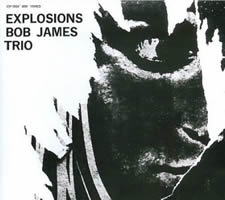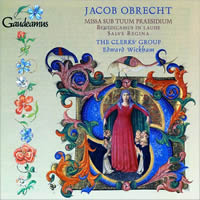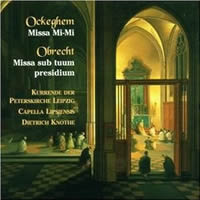Recordings Revisited 1.
|
Walt Mundkowsky [February 2009.]
Paul BLEY: Ballads. Bley (pno); Gary Peacock, Mark Levinson (bs); Barry Altschul (perc). ECM UCCE-3003 (Japanese import). Available from Amazon and CD Japan (http://www.cdjapan.co.jp/). Ballads (rec. 3-31 and 7-28-67) was planned as a double album for ESP. Instead, this half became ECM’s tenth release, in 1971. (Bley would later issue the rest on his own label, as Virtuosi [I.A.I. 37.38.44].) It reached CD in 2000, via ECM’s “piano-ism” series in Japan. I praised the group’s Ramblin’ (Sunspots SPOT 528) here, from the year before. It boasts a wider range of options, but these obsessive moods chill more deeply. Annette Peacock’s skeletal tunes are stretched nearly to snapping, and melancholy settles like fog. Soon Bley would escape; after the slyly named Mr. Joy (1968), he spent several years with Robert Moog’s pioneering synthesizers. Naked instrumental rôles and obstinate despair — Ballads could be jazz’s version of late Shostakovich. That isolation is emphasized when each player takes a different tempo. Altschul’s restless, shuffling beat seldom drives events, and his focus on cymbals and snare fits the bare textures. “Ending” comes first, lasts 17:20 and resists resolution. Familiar Bley patterns — jagged phrasing, leaping intervals, plentiful pauses — wander, and awaited climaxes never arrive. Bass and drum solos (i.e., Bley’s absence) don’t quell the anxiety. With its opening tumult, gleaming shards, and rising, abrupt close, “So Hard It Hurts” (12:13) conveys an odd trajectory. The pianist sits out the middle section, for a lengthy bass / drum dialog, then a rapid-fire Altschul solo. Between these pylons stands “Circles” (2:59), more cutting than either. As Bley repeatedly laps the melodic circuit, one imagines “a raw destructive brain that pushes itself trying to get it right” (Benjamin Weissman on Bernhard’s Concrete). These tapes weren’t ECM originals, but they sounded superb in their day (solid, rounded images). Skillful remastering has preserved the frequency extremes, and a bit of hiss. On “Ending,” bassist Gary Peacock seems more closely miked than future audio mogul Mark Levinson does on the remainder, but Peacock’s work has a stronger profile. For me, this is Bley’s most searching period.
Bob JAMES Trio: Explosions. James (pno), Barre Phillips (bs), Robert Pozar (perc). ESP-Disk ESP 1009 (http://www.espdisk.com/). To anyone exploring jazz’s frontier during the mid-’60s, ESP discs were crucial. (Getting them in Denver required both determination and luck, but that was part of the fun.) They are now back in NYC after stints at ZYX-Music (Germany) and Calibre bv (Holland). The roster features Albert Ayler, Bley, Ornette Coleman, Pharoah Sanders and Sun Ra, along with archival collections of Holiday and Parker. Bob James doesn’t belong in that company, but these Explosions (rec. 5-10-65) will stun both his detractors and fans. Dramatic gestures and interrupted progress are the keynotes. “Peasant Boy” starts with Debussy-like ripples widened by washes of pedal, but James soon turns to forays inside the piano, and then to left-hand rumbling. The dénouement is strikingly delicate. The title track also offers a bumpy ride, which begins with chimes and well-spaced piano / bass. Spooky harmonic suspensions follow, framed with Phillips’ buzzsaw bowing and drawn-out highs. The promised detonations spotlight Pozar moving decisively through a vast junk shop. Elsewhere, the music has to fight past electronic sludge (credited to Robert Ashley, Gordon Mumma and James). The finale seems an Ashley idea, a jazz trio run over by the broadcast of a motorcycle race. Explosions remains a puzzle in the James canon; he was next seen accompanying Sarah Vaughan, before descending into the mush of CTI Records. A transfer this fine leaves me eager to try other ESP titles I loved back when. Its sound is surprisingly vivid — critical if the sudden shifts are to register and kick the proceedings along.
Jacob OBRECHT: Benedicamus in laude; Sub tuum praesidium (plainchant); Missa Sub tuum praesidium; Salve crux; Beata es Maria; Salve regina a 3; Mille quingentis; Factor orbis. The Clerks’ Group, Edward Wickham (dir.). Gaudeamus CD GAU 341 (http://sanctuarynewmedia.com/classics/search.php). Distributed in the US by Koch Entertainment (http://www.kochdistribution.com/). Dietrich Knothe’s 1966 recording of this Mass was made in East Germany and arrived in the West through DG Archiv SAPM 198 406. It introduced many of us to the mysteries of Obrecht (1457/8-1505), a force in the Flemish reign over the era’s sacred music. A 1995 CD release (Berlin Classics 0030 762BC, O/P) was no bargain, despite its budget price. Serious imbalances doom the attempt; the children’s voices on top understandably lack volume, and Knothe summons instruments to bring color and reinforcement as the piece unfolds. Alas, the trombones in the Credo recall Bruckner’s E minor work, which might be where these folks belong. Obrecht delights in arcane procedure; the Mass employs a pile of cantus firmus citations, Sub tuum praesidium referring to the Marian antiphon heard throughout in the top voice. It in turn is augmented by several others, and the climax interweaves four separate chants. He adds one more part for each successive movement, so the three in the Kyrie are seven by the concluding Agnus Dei. (The number seven carried symbolic weight for the cult of Mary.) The whole is 888 semibreves long; Kyrie and Gloria take up 333, while the three movements that follow occupy 555. The Clerks’ Group was in exceptional shape for this 2003 effort, from opening fanfare (a ringing Benedicamus in laude) to the virtuosic Factor orbis (Maker of the world). Their main qualities — striding tempos, a vibrant blend where individuals are evident — serve Obrecht well; it’s easy to spot an additional voice in every Mass section, or the emphasis shifting from soprano plainchant to churning activity beneath it, and back. Of the motets, three are connected to Mary. The rarity Mille quingentis concerns the death of Obrecht’s father in 1488 (Requiem aeternam is transposed in the tenor). Director Wickham’s notes mention the son’s sin of pride — inserting himself into the text as “Orpheus Jacob for the Muses.” The result justifies the arrogance. A Paul Hillier-led Ars Nova has two singers per part rather than one and different notions on pacing the Mass (Ars Nova VANCD02), and Capella de la Torre employs instruments (Coviello Classics COV 20714), placing it outside my pleasure zone.
Henry PURCELL: Fantasias for the Viols 1680. Hespèrion XX, Jordi Savall (dir.). AliaVox AVSA 9859 (hybrid multi-channel SACD) (http://www.alia-vox.com/). Distributed in the US by Harmonia Mundi (http://www.harmoniamundi.com/). During the summer of his 21st year (1680), Purcell created this cycle, in a style no longer current. (Roger North reported that Charles II “had un utter detestation of Fancys” and “could not forbear whetting his witt upon the subject of the Fancy-musick.”) One can detect the influence of Purcell’s teacher Matthew Locke (d. 1677), and of John Jenkins (d. 1678), but it’s unclear what purpose the Fantasias might have served. They represent a stage in Purcell’s self-discovery and a past he couldn’t follow, and are as tantalizing and profound as any chamber music prior to Haydn-Mozart-Beethoven. The bulk of the 15 are for three (three selections) or four players (nine). Many of them are dated, and the speed at which Purcell set down music of such complexity and finish amazes. Every sort of contrapuntal device is wielded, along with Locke’s penchant for rapid, unsettling contrasts. What’s unique are Purcell’s chromatic harmonies, which add emotional weight or skewer expectations. The Fantasia on One Note (for five) is built around its immovable center — a tenor viol sounds middle-C throughout. Purcell closes with In Nomine fantasias for six and seven voices, capping a 130-year fixation with the plainchant subject of a John Taverner mass. Incredibly, a few months before the Purcell tricentenary (1995) this magnificent music could not be found on disc. Three notable new readings surfaced during the Purcell year or shortly thereafter, and they still command the field. Fretwork’s keenly anticipated statement (Virgin Veritas CDC 45062 2) doesn’t disappoint — alert to every tremor, and gorgeously measured. Phantasm (Simax PSC 1124) takes a more activist position, pressing forward without looking hectic. And Hespèrion XX (originally Auvidis Astrée E8536) brings a lush palette to the pursuit of bipolar mood swings. Last year, head man Jordi Savall rescued his tapes and brought out this deluxe edition. (Here’s hoping his Tye, Dowland and Jenkins albums also materialize.) The remastered sound is strong on resiny detail. Indeed, bowing action per se sometimes trumps direction — or we move inside the music as never before. This fascinates as it erases context; a less specifically English take I’ve seldom heard. Virgin Classics has lent five Fretwork discs from the 1990s new life, for a jaw-dropping total of $15.98 (0946 3 95164 2 1). They are Jenkins, two William Lawes, Locke — and their Purcell Fantazias. If any one of them appeals, the rest are freebies.
[More Recordings Revisted, Walt Mundkowsky]
[Previous Article:
EA Bucket 8.]
[Next Article:
La Rondine, Orfeo ed Euridice, Thaïs, etc.]
|




